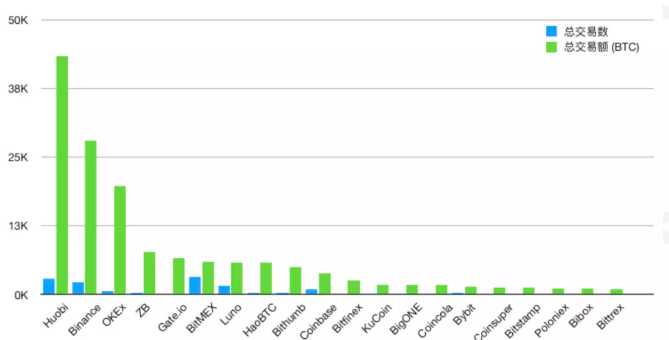Contents
Key facts:
In the past six months, the firm PeckShield analyzed 14.000 flows of BTC.
Would address high-risk, especially those associated with attacks of hackers.
More than 1,400 millions of dollars in bitcoin stained have been transferred from the directions of “high-risk” until significant houses of change of cryptocurrencies. The transfers are presented in the latest semiannual report of the chinese firm analysis of the blockchain and security PeckShield, published this Monday.
Between the addresses that qualify as “high-risk”, PeckShield includes those associated to attacks from hackers, attacks, capital markets dark networks, or those linked to games of chance and gambling on-line, among others.
PeckShield notes in its report that ranked the houses of change of cryptocurrencies recipient of the funds being questioned, according to the amount of BTC received. The first 10, according to PeckShield are: Huobi, Binance, OKEx, ZB, Gate.io, BitMEX, Luno, HaoBTC, Bithumb and Coinbase.
Huobi, Binance and OKEx, which receives around 90,000 BTC, are the houses of change dominant, as they cover more than 60% of the bitcoin stained transferred, qualified as high risk.
Flows of BTC to exchange houses from address of “high-risk”. Source: PeckShield.
As a result of the follow-up to the addresses of high-risk, PeckShield recorded inflows to these addresses USD 1.620 million in the first half, of which us $ 1,400 million they would have gained access to houses of change. Also in the report is recorded flows towards the so-called “providers of services of currency mixed” services (mixers BTC) to USD $ 1.590 million.
It is particularly important to emphasize that the funds sent through the service of currency mixed are like a sea that is sinking (sic), it is likely that most of them have been washed successfully, and it is difficult to perform a technical follow-up. Providers common services currency mixed: Bitlaunder, HelixMixer, Samourai, Wasabi, BitcoinFog, etc., The institutions of resale centralized are: ChangeNow, CoinSwitch, etc
PeckShield.
Monitoring of the illicit funds
In terms of outflows of illicit funds, Binance, Huobi, Kraken and Luno were the houses of change of cryptocurrencies that stood out. More than 30,000 BTC of funds questioned came out of such exchanges between January and June of 2020.
Since the beginning of this year, PeckShield studied inflows of BTC of the main houses of change of cryptocurrencies.
The data show that, since march 9, the flow of BTC incoming has increased significantly and reached a peak on 12 march, the day on which the BTC incoming reached the 436.600.
PeckShield.
PeckShield emphasizes the use of the services of a mix of cryptocurrencies and resale the centralized washing of the funds. The security firm you select an example of attack in particular, made to the house of change Upbit to the end of 2019, which resulted in the theft of 342.000 ETH. The reason for the choice is the variety of methods used to obfuscate the destination of the funds.
In the past six months, says PeckShield, hackers have combined operations of transfer of assets, court, transfer, decentralized, mixed, and money laundering. This has allowed them to clean the ETH and direct them to exchange houses as Binance, BitMax, Gate.io, Huobi, KuCoin, and OKEx, among others.
Among their conclusions, SpeckShield points out that there are many mechanisms that prevent tracking the funds coming from illicit operations, because among the channels which are not regulated are exchange houses centralized and decentralized, service mix, or the web dark, among others. “In general, the time window for tracking the existence of money stolen is too large, which makes it easier for many criminals to wash their money.”
Throughout the study, it is assumed the use of the services of a mix of cryptocurrencies as a resource illegal. However, for many bitcoiners, these services reinforce the privacy of their transactions and do not necessarily associate their use to illicit activities.
It is also worth noting that there is no such thing as a bitcoin-spotting at the level of protocol. The so-called “spots” are trademarks human on certain transactions that serve to make follow-up funds identified as suspects.

